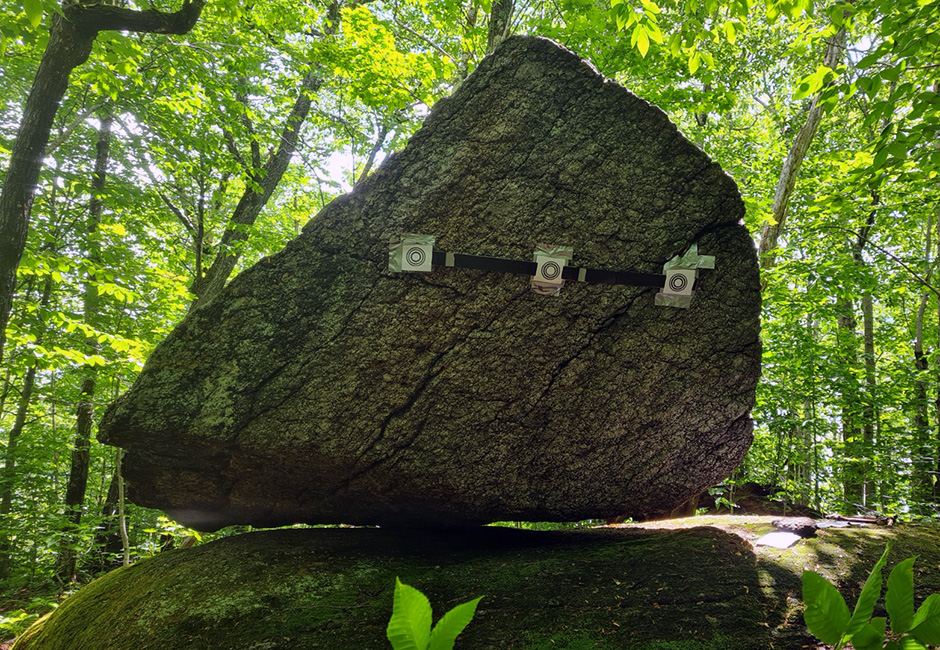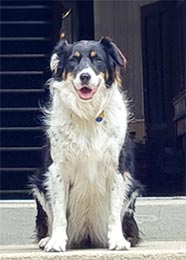
Ancient fragile geologic feature, New Hampshire, USA.
 The establishment of the Chair of Earthquake Science, and the appointment of Professor Mark Stirling as the Inaugural Chair in early 2016 effectively marked the commencement of significant efforts to address earthquake science and the associated hazards and risks in low seismicity southern New Zealand.
The establishment of the Chair of Earthquake Science, and the appointment of Professor Mark Stirling as the Inaugural Chair in early 2016 effectively marked the commencement of significant efforts to address earthquake science and the associated hazards and risks in low seismicity southern New Zealand.
Otago and Southland share a similar low seismicity tectonic setting to that of Canterbury, as all three provinces lie east of the plate boundary. The 2010–2012 Canterbury earthquake sequence showed these regions to be capable of significant activity after long periods of seismic quiescence.
The establishment of an endowment through the generous donations of individuals, such as Emeritus Professor Rick Sibson, has made the chair position possible, and the position has also recognised the need to have earthquake science expertise permanently established in the Otago region.
For more information, please contact:
Professor Mark Stirling
Chair of Earthquake Science
Email mark.stirling@otago.ac.nz
Recent activities of the Otago Earthquake Science Group
Our activities continue to encompass much of the broad spectrum of earthquake science.
We are working on the paleoseismology of faults in Otago, Nevada, and New South Wales, earthquake statistics, strong motion seismology, update of the national seismic hazard model for New Zealand, using microseismicity to identify unmapped faults in Southland, and use of fragile geologic features to constrain seismic hazard models in New Zealand and the USA.

Buffalo Valley fault scarp, central Nevada.
Our people
Mark Stirling – Chair
Mark is currently working on using fragile geologic features to test and evaluate the New Zealand and US national seismic hazard models, and has an ongoing Core Team role in the National Seismic Hazard Model. Mark Stirling's profile page
Jack Williams – Postdoctoral fellow
Jack has been working on a number of fronts that are collectively focused on understanding seismotectonics and seismic hazard in the south. He has deployed a temporary seismic network across Southland to locate microearthquakes and identify unknown earthquake sources, has trenched the Settlement and Nevis Faults, and has collaborated in the development of new distributed seismicity models for the New Zealand national seismic hazard model. He has also co-supervised two of Mark’s postgraduate students.
Present postgraduate students
- Alexandra Travers: Alex is undertaking her PhD on the rupture displacement hazard of reverse faults, using the Dunstan, Fox Peak and Lake Heron faults (Otago, Canterbury) as foci
- Govinda Niroula: Govinda’s PhD is on testing and evaluation of RSQSim stochastic rupture models in New Zealand and Nepal
- Ashleigh Vause: Ash’s MSc is on the Fluvioglacial terrace chronology and late Quaternary activity of the Pisa Fault, Otago
- Lucy O’Neill: Lucy’s MSc is focused on deformation modelling of Otago using Pylith software
Sage Stirling
Sage is the official comfort dog of the Department of Geology. She won the Good Girl Award for the sixth year running at the annual geology dinner.
She has been an indispensable stress reliever for undergraduate and postgraduate students alike, and a wonderful field companion in the summer months.
Student projects
Student projects are now available for prospective PhD and masters' students who have an interest in earthquake science. There are projects available relating to active and potentially active faults, statistical seismology, and seismic hazard.
Our projects tend to attract industry funding, and provide students with valuable exposure to potential future employers. Specific projects available at present are as follows:
- Paleoseismology of the Raggedy Range Fault, Central Otago. One of the few major active reverse faults of Otago still needing to be studied by our group. MSc or PhD degree, with field costs supported. PhD will require competitive Otago scholarship application
- Paleoseismology of the Ranfurly Fault, Central Otago. One of the few major active reverse faults of Otago still needing to be studied by our group. MSc or PhD degree, with field costs supported. PhD will require competitive Otago scholarship application
- Paleoseismology of the Gimmerburn Fault, Central Otago. One of the few major active reverse faults of Otago still needing to be studied by our group. MSc or PhD degree, with field costs supported. PhD will require competitive Otago scholarship application
- Paleoseismology of the Blue Mountain Fault, Central Otago. One of the few major active reverse faults of Otago still needing to be studied by our group. MSc or PhD degree, with field costs supported. PhD will require competitive Otago scholarship application
- Waihemo Fault, active or dead? MSc or PhD degree, with field costs supported. PhD will require competitive Otago scholarship application
- Fragile geologic features and testing and evaluation of seismic hazard models. Projects available in Otago, eastern North Island, and Taupo Volcanic Zone. PhD degree, will require competitive Otago scholarship application
- Earthquake geology of active normal faults in the Basin and Range of Nevada. PhD degree, will require competitive Otago scholarship application
- Earthquake recurrence and probability modelling for major active faults. PhD, with possible US industry support and/or competitive Otago scholarship application
Please contact Mark to discuss if you interested

Teaching students about active faults. The Akatore Fault, Otago’s most active fault.